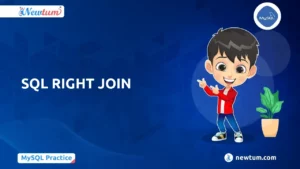Recursive CTE SQL is a powerhouse for tackling complex hierarchical data structures, like family trees or project task dependencies. Understanding it can simplify problems often perceived as daunting, offering elegant solutions to infinite loops or endless parent-child relationships. Stick with us, and you’ll discover its magic for your projects!
What is Recursive CTE SQL?
If you’re new to SQL, you might be scratching your head over “Recursive CTE SQL.” So, what’s it all about? A Recursive Common Table Expression (CTE) in SQL is a handy tool used to work with hierarchical data. It allows you to create queries that repeatedly refer to a temporary result set within the main query, cycling through rows until a condition is met, very much like a loop in a programming language. Basic syntax looks like this: `WITH RECURSIVE cte_name AS (initial_query UNION ALL recursive_query) SELECT * FROM cte_name;` Intrigued? Well, let’s dive deeper into it!
WITH RECURSIVE cte_name (column1, column2) AS (
SELECT initial_value1, initial_value2
UNION ALL
SELECT expression1, expression2 FROM cte_name WHERE condition
)
SELECT * FROM cte_name;
Sample Code of Recursive CTE SQL
sql
WITH RECURSIVE cte_name (column1, column2, ...) AS (
-- Anchor member: the initial query that runs first
SELECT column1, column2, ...
FROM your_table
WHERE some_condition
UNION ALL
-- Recursive member: references itself and processes rows one at a time
SELECT column1, column2, ...
FROM your_table
JOIN cte_name ON your_table.some_column = cte_name.some_column
WHERE another_condition
)
SELECT column1, column2, ...
FROM cte_name;
Explanation of the Code
Let’s break down the provided Recursive CTE SQL code logically, starting from the basics:
- This code defines a
WITH RECURSIVEclause, which is perfect for dealing with hierarchical or tree-structured data in a database.First, it introduces an anchor member, a simpleSELECTquery that grabs rows meeting a specified condition fromyour_table. This forms the initial set of results.UNION ALLcombines the anchor member with the recursive member, allowing each iteration to add to the result set.The recursive member, quite ingeniously, references itself through aJOIN. By connecting data fromyour_tableback to the CTE, it iteratively processes data rows.Finally, the outerSELECTgathers columns from the final, resolved data incte_name.
Output
Advanced Use Cases of Recursive CTEs in SQL (With Code & Outputs)
1. Deep Hierarchies (File Systems, BOMs)
Sample Input (files table)
| id | parent_id | name |
|---|---|---|
| 1 | NULL | Root |
| 2 | 1 | Documents |
| 3 | 1 | Pictures |
| 4 | 2 | Reports |
| 5 | 4 | 2025 |
| 6 | 3 | Travel |
Query
WITH RECURSIVE FileHierarchy AS (
SELECT id, parent_id, name, 1 AS level
FROM files
WHERE parent_id IS NULL
UNION ALL
SELECT f.id, f.parent_id, f.name, fh.level + 1
FROM files f
INNER JOIN FileHierarchy fh ON f.parent_id = fh.id
)
SELECT *
FROM FileHierarchy
ORDER BY level, name;
Expected Output
| id | parent_id | name | level |
|---|---|---|---|
| 1 | NULL | Root | 1 |
| 2 | 1 | Documents | 2 |
| 3 | 1 | Pictures | 2 |
| 4 | 2 | Reports | 3 |
| 6 | 3 | Travel | 3 |
| 5 | 4 | 2025 | 4 |
📌 The hierarchy is fully expanded with level showing depth.
2. Graph-like Relationships (Multi-Parent Dependencies)
Sample Input (project_dependencies table)
| project_id | dependency_id |
|---|---|
| A | B |
| A | C |
| B | D |
| C | D |
| D | E |
Query
WITH RECURSIVE ProjectDeps AS (
SELECT project_id, dependency_id, 1 AS depth
FROM project_dependencies
UNION ALL
SELECT pd.project_id, d.dependency_id, depth + 1
FROM ProjectDeps pd
INNER JOIN project_dependencies d
ON pd.dependency_id = d.project_id
)
SELECT DISTINCT project_id, dependency_id, depth
FROM ProjectDeps
ORDER BY project_id, depth;
Expected Output
| project_id | dependency_id | depth |
|---|---|---|
| A | B | 1 |
| A | C | 1 |
| A | D | 2 |
| A | E | 3 |
| B | D | 1 |
| B | E | 2 |
| C | D | 1 |
| C | E | 2 |
| D | E | 1 |
📌 This query resolves all direct and indirect dependencies for each project.
3. Generating Sequences, Paths & Lineage
A. Generate Numbers (1–10)
Query
WITH RECURSIVE Numbers AS (
SELECT 1 AS n
UNION ALL
SELECT n + 1 FROM Numbers WHERE n < 10
)
SELECT * FROM Numbers;
Expected Output
| n |
|---|
| 1 |
| 2 |
| 3 |
| 4 |
| 5 |
| 6 |
| 7 |
| 8 |
| 9 |
| 10 |
📌 Useful for creating sequences without dedicated tables.
B. Employee Lineage Path
Sample Input (employees table)
| id | manager_id | name |
|---|---|---|
| 1 | NULL | CEO |
| 2 | 1 | ManagerA |
| 3 | 1 | ManagerB |
| 4 | 2 | LeadX |
| 5 | 4 | Dev1 |
Query
WITH RECURSIVE OrgPath AS (
SELECT id, manager_id, name, name AS path
FROM employees
WHERE manager_id IS NULL
UNION ALL
SELECT e.id, e.manager_id, e.name, op.path || ' -> ' || e.name
FROM employees e
INNER JOIN OrgPath op ON e.manager_id = op.id
)
SELECT *
FROM OrgPath
ORDER BY path;
Expected Output
| id | manager_id | name | path |
|---|---|---|---|
| 1 | NULL | CEO | CEO |
| 2 | 1 | ManagerA | CEO -> ManagerA |
| 3 | 1 | ManagerB | CEO -> ManagerB |
| 4 | 2 | LeadX | CEO -> ManagerA -> LeadX |
| 5 | 4 | Dev1 | CEO -> ManagerA -> LeadX -> Dev1 |
This builds a complete reporting path for every employee.
Performance Considerations & Pitfalls
Recursive CTEs are powerful, but careless usage can lead to performance bottlenecks or incorrect results.
1. Infinite Recursion / Cycle Detection
If your data has circular references (e.g., employee managing themselves indirectly), the recursion can run forever.
Example Problem:
-- Employee A -> B, B -> A (cycle)
Solution:
- Use a
WHEREclause orMAXRECURSION(SQL Server) to stop infinite loops. - Add a visited path check:
WITH RECURSIVE OrgPath AS (
SELECT id, manager_id, name, name AS path
FROM employees
WHERE manager_id IS NULL
UNION ALL
SELECT e.id, e.manager_id, e.name, op.path || ' -> ' || e.name
FROM employees e
INNER JOIN OrgPath op ON e.manager_id = op.id
WHERE op.path NOT LIKE '%' || e.name || '%'
)
SELECT * FROM OrgPath;
2. Recursion Limits
Most databases impose limits:
- SQL Server: default
MAXRECURSION = 100(can set up to 32,767). - PostgreSQL / MySQL: limited by memory/stack.
Best Practice: Always include a depth/level column and stop recursion at a reasonable threshold.
3. Matching Data Types Between Anchor & Recursive Parts
Both anchor and recursive queries must have identical column types and counts.
Pitfall Example:
-- Anchor returns INT, recursive part returns BIGINT -> Error
Fix: Use explicit casting.
CAST(column AS BIGINT)
4. Indexing / Optimizing Joins
Recursive CTE performance often depends on how efficiently recursive joins are processed.
Best Practices:
- Ensure
JOINkeys (e.g.,parent_id,manager_id) are indexed. - Filter early (use
WHEREinside recursive part). - Use smaller SELECT lists (only needed columns).
5. Avoiding Large Intermediate Result Explosion
Recursive queries can multiply rows exponentially.
Tips:
- Add
LIMITor recursion depth constraints. - Apply selective filters (
WHERE,TOP,DISTINCT). - Avoid carrying unnecessary columns through recursion.
Comparing with Alternatives
Recursive CTEs are not always the only (or best) way to solve hierarchical queries. Let’s compare.
1. Self-Joins & Nested Queries
Before CTEs, hierarchies were handled with multiple JOINs.
Example:
SELECT e1.name, e2.name AS manager, e3.name AS grand_manager FROM employees e1 LEFT JOIN employees e2 ON e1.manager_id = e2.id LEFT JOIN employees e3 ON e2.manager_id = e3.id;
Works for small, fixed-depth hierarchies but not scalable for unknown depth.
2. Procedures or Loops Outside SQL
Some developers fetch rows and traverse hierarchies in application code (Python, Java, PHP).
Pros: Full control, easier debugging.
Cons: More round-trips, higher complexity, slower for large data.
3. Vendor-Specific Features
- Oracle:
CONNECT BY
SELECT employee_id, manager_id, LEVEL FROM employees CONNECT BY PRIOR employee_id = manager_id;
- SQL Server: Recursive CTEs (default approach).
- PostgreSQL:
WITH RECURSIVE. - MySQL 8+:
WITH RECURSIVE(earlier versions lacked this).
Pros: Sometimes faster, optimized.
Cons: Locks you into one database system.
Quick Comparison Table
| Approach | Pros | Cons |
|---|---|---|
| Recursive CTEs | Elegant, standard SQL, works cross-database | Needs careful optimization, recursion limits |
| Self-Joins/Nested | Simple for small hierarchies | Not scalable, fixed depth only |
| Procedures/Loops | Full control, flexible | Slow for large data, more complex |
| Vendor Features | Optimized, concise | Vendor lock-in, not portable |
Best Practices for Recursive CTEs
Using Recursive CTEs effectively requires discipline in query design. Here are proven best practices:
1. Naming & Readability
- Use meaningful names (
OrgHierarchy,FileTree) instead of genericcte1. - Format queries with proper indentation for anchor and recursive parts.
WITH RECURSIVE OrgHierarchy AS (
-- Anchor
SELECT ...
UNION ALL
-- Recursive
SELECT ...
)
2. Always Include a Level/Depth Column
- Track recursion depth (
levelordepth) to debug and control queries. - Helps identify infinite loops and analyze hierarchy depth.
3. Path or Chain Accumulation (If Needed)
- Maintain a
pathcolumn (e.g.,CEO -> Manager -> Employee) for clarity. - Useful for reporting and debugging hierarchy.
4. Limit Recursion Early
- Add filters in the recursive part (
WHEREclauses) to stop unnecessary expansions. - Example: restrict to
depth < 10or filter by department.
5. Test on Sample Data Before Production
- Start with a small dataset to verify correctness.
- Validate performance with large datasets before deployment.
Real-Life Uses of Recursive CTE SQL
- Hierarchical Data Analysis by Facebook
Facebook utilizes Recursive CTE SQL to analyze user relationships and follow the connection levels in social networks. This allows for identifying the paths between users in a vast hierarchy.
WITH RECURSIVE FriendsOfFriends AS (
SELECT user1 AS friend, user2 AS connect_from, 1 AS level
FROM Friendships
UNION ALL
SELECT f.user1, fr.connect_from, fr.level + 1
FROM Friendships f
JOIN FriendsOfFriends fr ON f.user2 = fr.friend
)
SELECT * FROM FriendsOfFriends WHERE level <= 3;
The output provides paths in the social network up to the third degree of connection, helping Facebook recommend friends. - Product Category Tree by Amazon
Amazon employs Recursive CTE SQL to manage product categories and sub-categories, helping them structure and retrieve data efficiently on their e-commerce platform.
WITH RECURSIVE CategoryHierarchy AS (
SELECT category_id, category_name, parent_category_id
FROM Categories
WHERE parent_category_id IS NULL
UNION ALL
SELECT c.category_id, c.category_name, ch.category_id
FROM Categories c
JOIN CategoryHierarchy ch ON c.parent_category_id = ch.category_id
)
SELECT * FROM CategoryHierarchy;
This snippet returns the structured hierarchy of categories and sub-categories to show an organised view on Amazon’s platform. - Human Resources Management by Google
Google uses Recursive CTE SQL for generating organisational charts to display employee structures and their respective managers.
WITH RECURSIVE OrgChart AS (
SELECT employee_id, name, manager_id
FROM Employees
WHERE manager_id IS NULL
UNION ALL
SELECT e.employee_id, e.name, o.employee_id
FROM Employees e
JOIN OrgChart o ON e.manager_id = o.employee_id
)
SELECT * FROM OrgChart;
The output helps Google map out the reporting structures clearly, aiding in HR management decisions.
Recursive CTE SQL Questions
1. How do you detect / prevent cycles in recursive CTEs in production datasets (not toy examples)?
Answer:
Cycles can appear in real hierarchies (e.g., corrupted org charts, mislinked BOMs). To prevent infinite recursion:
- Cycle detection with path column – Append IDs to a path and use
WHERE NOT LIKE '%current_id%'to prevent revisits. - Use
CYCLEclause (Oracle, PostgreSQL 14+) – Automatically detects cycles and marks them. - Data quality check before recursion – Pre-run queries to validate foreign keys, e.g. detecting nodes with circular parent references.
- Monitoring recursion depth – Introduce a
LEVELcolumn and stop at a practical depth (e.g., 50 for org charts).
2. How do you measure / optimize performance of a recursive CTE in large, deep hierarchies?
Answer:
- Index parent/child columns – Non-clustered index on
(ParentID, ChildID)speeds recursive joins. - Materialize anchor sets – Store frequently queried hierarchies into temp tables to reduce recalculation.
- Batch recursion – Use
OPTION (MAXRECURSION n)with iterative queries if depth is extreme (>1000). - Query plans – Use
EXPLAIN/SET STATISTICS IOto measure row explosion. - Hybrid strategy – Mix recursive CTE with pre-computed “closure table” when queries are repetitive.
3. When should you not use recursive CTEs? What are the trade-offs vs closure table / nested sets / graph DBs?
Answer:
- Don’t use recursive CTEs when hierarchies are very large (millions of nodes) and queried repeatedly.
- Closure table – Best for fast repeated hierarchy queries (precomputed relationships).
- Nested sets – Great for range queries (e.g., “all descendants”), bad for frequent inserts/updates.
- Graph DBs – Optimal for complex, multi-parent relationships (recommendation engines, social graphs).
4. How to accumulate a path / lineage efficiently without blowing up string concatenation cost?
Answer:
- Use delimited array types (PostgreSQL’s
ARRAY_AGG()) instead of raw string concatenation. - SQL Server – Use
STRING_AGGwith recursion but only at leaf level to avoid mid-iteration cost. - Hybrid – Store path IDs in a numeric array column, convert to string only at output stage.
- Compression – Use hashing for intermediate path tracking to avoid exponential string growth.
5. How do recursive CTEs behave tolerating gaps / missing parent references (i.e. broken hierarchies)?
Answer:
- SQL Server – Recursion stops at missing parent, silently producing partial tree.
- PostgreSQL – Same behavior, but you can
LEFT JOINin recursive member to explicitly surface orphans. - Best practice – Add a “root validator” query to flag records with no valid ancestry.
- Production fix – Insert placeholder “Unknown” node for missing references to avoid breaking downstream reports.
6. Vendor differences: How do recursive CTEs behave in SQL Server vs PostgreSQL vs MySQL vs Oracle (performance, recursion limits, syntax nuances)?
Answer:
- SQL Server – Default recursion depth 100; increase with
OPTION (MAXRECURSION n). - PostgreSQL – True
WITH RECURSIVE, supports cycle detection (14+). No recursion cap. - MySQL 8+ – Supports recursive CTEs, but performance lags with deep hierarchies due to optimizer.
- Oracle –
CONNECT BY PRIOR(older) andWITH RECURSIVE(newer).CONNECT_BY_ISCYCLEis cycle-safe. - SQLite – Lightweight recursion, but memory-intensive for large results.
7. How are recursive CTEs used in real industry systems at scale?
Answer:
- E-commerce (Amazon, Shopify) – Category trees & product recommendations.
- ERP (SAP, Oracle) – Bill of Materials expansion using recursion for cost rollups.
- Social media (LinkedIn, Facebook) – Friend-of-friend or org chart lineage queries.
- Finance (Goldman Sachs, JP Morgan) – Risk lineage across derivative portfolios.
- Healthcare – Patient referral hierarchies, insurance claim escalations.
Our AI-powered SQL online compiler allows users to instantly write, run, and test code. This tool is designed to streamline your coding experience, making it easier and faster. Get immediate feedback on your SQL scripts and enhance your skills efficiently without any hassle.
Conclusion
Recursive CTE SQL deepens your understanding of complex data structures, empowering you with advanced query skills. Once you’ve mastered it, you’ll feel a sense of accomplishment. Why not dive in and try it for yourself? To expand your programming knowledge further, explore more at Newtum.



